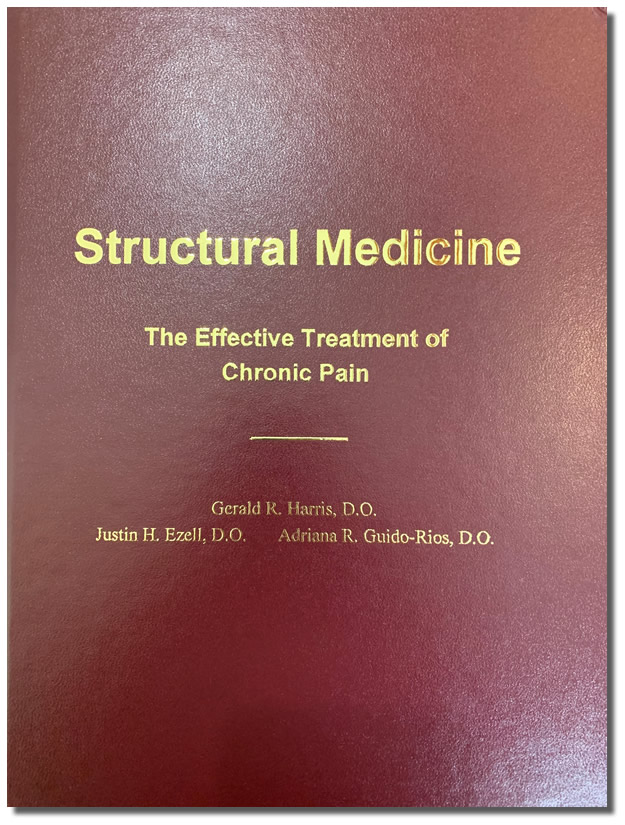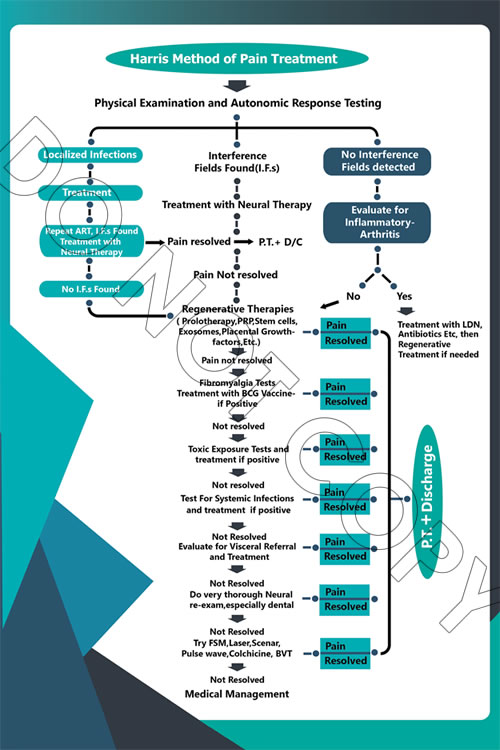Order Your Copy


Pain Treatment Book
Here it is! The entire system that I use to treat pain patients.
This book is the end result of many years of trial and error in my quest to cure chronic pain patients. After I went into practice, I tried the algorithms for pain treatment that I had been taught in my medical training, but to my dismay, I found them to be woefully inadequate in many cases. There were successes, but all too often the patients experienced only temporary relief, and in a discouragingly large percentage of cases, they experienced virtually no improvement despite my most determined efforts. The problem was that the techniques that I had so dutifully learned and implemented, simply were not effective in giving long term relief.
Upon coming to this realization, I went on a quest. I began attending numerous conferences, seminars, and workshops all over the country that had anything to do with treatment of pain. I got up to bronze frequent flyer status I went to so many such meetings. Much of what I learned there didn't work any better than what I had already tried, but occasionally I would encounter something that did work well, at least in some cases.
I began trying these different techniques haphazardly at first, then I noticed something curious; sometimes I would try a particular intervention and it would not work, then I would do another intervention, and then come back and try the first intervention again, and then it would work. It was at that point that I realized that it wasn't only important what was done to treat chronic pain, but the sequence that it was done in as well.
This book and the chronic pain treatment system outlined in it is the result of those years of effort. It begins by showing studies that clearly demonstrate the ineffectiveness of the contemporary approach, then shows the fallacies of the current beliefs as to how the musculoskeletal works, and a new way to see the structure of the body that accounts for how the body really works.
Subsequent chapters then sequentially go through the true sources of musculoskeletal pain and their accurate diagnosis, and then effective treatments that are available to correct those pain sources and restore the body to normal function. It ends with an algorithm which summarizes the treatment system. This algorithm is available in the form of a wall poster that may be purchased as well for rapid reference in the clinical setting.
Gerald R. Harris D.O.
Foreword
We (US health care providers) are losing our war against pain. I know something about warfare, having deployed multiple times to four different war zones as a US Army Physician. Find it, fix or destroy it, then move on. We are losing on all fronts: diagnostically, therapeutically, and economically. We have no new “thermometers for pain” so it is very difficult to find pain (objectively). We cannot continue to use/abuse opioid medications. Which is why the NIH has announced its largest request for proposed research to decrease opioid use at One Billion dollars. Economically, pain therapy and its impact on the US economy is well above 500 Billion dollars. We are losing on all fronts!
One definition of insanity is doing the same thing over and over again while still expecting an improved outcome that never appears. My friend and colleague, Gerald Harris D.O. has unique and science-based approaches to pain that should be taught starting in medical school. His over 25 years of practice he has accumulated a lot of practical (and successful) approaches to the diagnosis and treatment of patients with chronic pain. But like most senior physicians, I paired him up with two of my newly graduated (and no longer skeptical) residents in neuromuscular medicine. They reviewed and formally documented the science supporting Dr. Harris’ approaches to diagnosing and treating pain. If they can be convinced, I think the reader will be as well. But is it the practical experiences that make this book a must read for any health care provider who treats patients with chronic pain.
As a sports medicine physician, I have seen advances in rehabilitation. But in chronic pain management, a not so new and key component is often overlooked is that the Autonomic Nervous System has pain nerves too. Sadly, this fact has been well documented for many years, yet it is not a common consideration in any main-stream treatment strategies. Moreover, the associated pathology that can exacerbate or prolong pain is rarely addressed by most treating providers. Dr. Harris has provided a one-page chronic pain algorithm that should be on every providers reference file!
Like many areas of medicine, there can always be more scientific studies. I am involved in microcurrent therapies and am excited to finally document positive therapeutic results in pain, wound care and autoimmune nerve disorders. That is only one of the many treatment options mention in this book. I have used all these techniques successfully on self-paying patients. It is a shame that insurance companies do not cover most of these therapies. However, the general population, the governmental agencies, and later the insurance industry will re-look all options. Why? Because we are losing this war on pain.